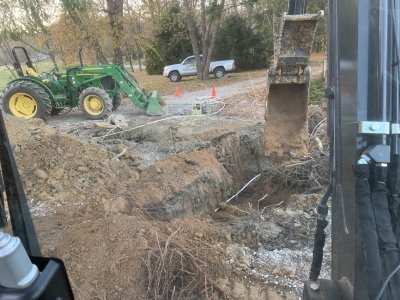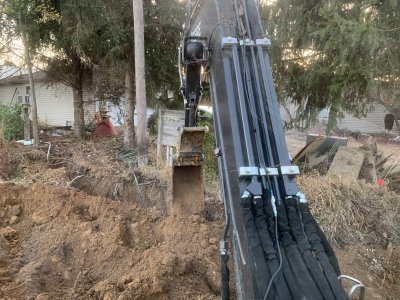- Joined
- Feb 25, 2021
- Messages
- 3,271
I'm working under a driveway. Capping conduit with concrete is a common way to increase crush resistance, for say when a load dump truck or concrete truck drives over that spot. I would not want to put concrete directly around buried wire or pipe, as I believe it could crack and induce shear points with sharp edges on those lines. If I cap w/ concrete, I'll need to put the EPS over the concrete, I think I implied wrong above.is capping with concrete normal?
Everything I'm installing is "private", meaning it on my side of the utility demark. Generally gas lines on the utility side of the meter have a tracer wire. Power and phone don't need wire tracing. Water is not usually traced since the utility company puts the meter in the road right of way.
Ironically, here in Indiana, the county roads are not county property. They are a public right of way across private property. Fairly narrow right of way too, most of the right of ways are 30'. That usually means the pavement is maybe 15' wide.
Last edited:



